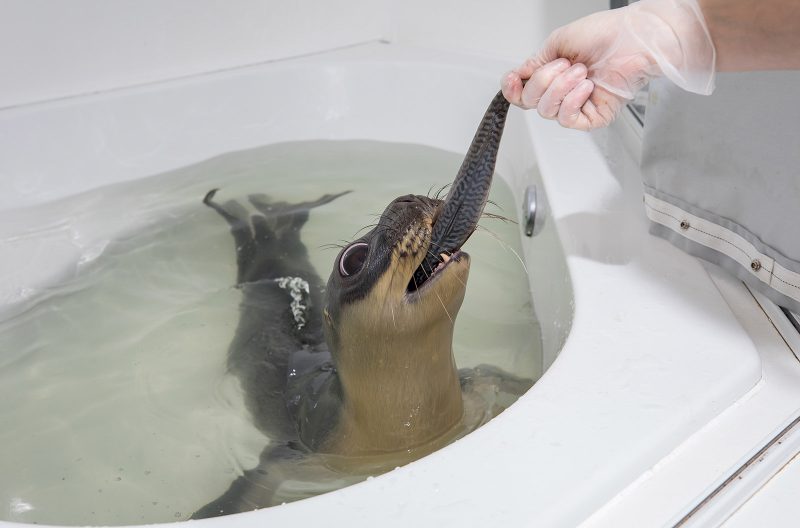Second Chance: Behind the Scenes at a Wildlife Rehab Centre

Over the last few years, I have been working on a photography project titled Second Chance, documenting the “behind-the-scenes” stories of wildlife rehabilitation centres.
These organisations work tirelessly to ensure that wildlife gets a second chance at life, and through this project I hope to document and showcase the people, animals, and heart and soul that goes into wildlife rehabilitation.


The work of wildlife rehabilitators
For those unfamiliar with wildlife rehabilitation centres, they are typically non-profit or charitable organisations that rescue and rehabilitate injured or orphaned wild animals, with an end goal of releasing them back into the wild.
During the course of this project, I have been very fortunate to have helped out at some of these centres, and had the privilege to work alongside rehabilitators (rehabbers), helping with rescues, releases and even feedings.

But as my project developed, it became clear that the efforts of wildlife rehabbers extends far beyond simply helping rehabilitate animals in need.
Many centres also maintain great outreach and education programs, some install signage where sensitive wildlife lives, whilst others harness social media to encourage coexistence and stewardship.

All rehab centres have a common goal with these outreach programmes – to minimise human-wildlife conflicts. In most cases, when people know better they will do better, reiterating the importance of education.
Connecting people and wildlife through imagery
A driving force behind this photography project was to share rehabilitation stories with the public.
It was started as an attempt to draw an audience in through compelling photographs, to help raise awareness, and to help promote coexistence with wildlife.

An important role of wildlife rehabilitation organisations is maintaining the complex web of an ecosystem. Keeping an ecosystem thriving and diverse sometimes includes working with endangered or sensitive species.
I believe that teaching people about the complex dynamics and structures of their local ecosystems can help minimise the harm they may otherwise unintentionally cause due to naivety or ignorance.
It is my hope that the stories and images I capture through Second Chance helps connect people with their local environment and it’s wildlife.

Whilst every patient admitted to rehab is treated with the same level of care, some endangered species that are brought in are essential to the overall health and diversity of an area, and as such, it is vital that they are returned to where they belong.
Working with sensitive species can expand in multiple directions, including treating patients on intake, or placing signage in highly trafficked areas to promote awareness of sensitivity.
I quickly learnt that work rehabs do seems never-ending.

Some animals will only be in the care of a rehab facility for a short period of time.
Unfortunately, others are not that lucky. Certain patients need multiple surgeries before they are fit to be released, and this is if they can evade life-threatening infection.

Depending on the species, orphans require rehabilitation for up to one or two years before they can be released with confidence that they will survive. No matter how hard rehabbers try to prevent patients from dying, the inevitable does happen.

Not all stories have happy endings, which makes the work these centres do incredibly emotionally draining. Heartbreak hits rehab centres quite often but, no matter how devastating some cases may be, they always push forward.
Memorable moments
Whilst shooting for this project, I had the incredible experience of witnessing fearful orphaned red foxes grow into strong, independent adults, and had the chance to photograph a red fox release.

Over the last ten or more years, red foxes have been a large part of my photographic work, so working to share their rehabilitation story was a truly special moment for me.

I am compelled to give back to the wildlife that ignited my passion, and which I depend on for photography.
Lessons from wildlife rehabilitation
Throughout my project documenting wildlife rehabilitation, I was constantly reminded that being a good steward for Earth doesn’t have to be complicated or time consuming.
There are many small changes we can make that create a big impact.
For those that enjoy gardening, one way to help our native species is re-wilding our back gardens; planting native species of flora rather than invasive ornamentals. For those who commute on the roads, take it slow and watch your speed while driving.

If you end up with an unwanted visitor in your attic, find an ethical method to evict the undesirable tenant, rather than calling an exterminator (sometimes, playing loud music for a couple of days is all it takes to encourage them to move on).
In conclusion
Non-human lives are incredibly valuable, and contribute significantly to the overall health of the planet.

Over the last few years photographing the work of wildlife rehabbers, I’ve learned that now, more than ever, wildlife needs us to do our part. Many of the issues we cause (or face) can be avoided, and sometimes with an easy solution.
As our societies continue to expand, exploiting natural resources and encroaching on wilderness areas, it will continue to have negative ramifications for vulnerable species of flora and fauna. But it doesn’t need to end badly; humans can live alongside wildlife by learning how to coexist.
I hope that this project will help people see that coexistence can be easily achieved, and that wildlife deserves, and in many ways needs, our protection.





